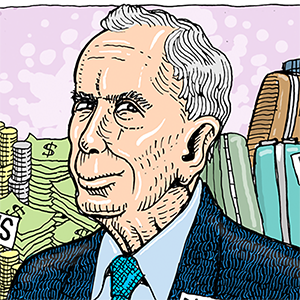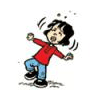Current News
/ArcaMax

Michigan lawmakers' personal disclosures often leave out key details
Despite vows of transparency, annual financial disclosures filed by Michigan lawmakers this month provided an incomplete picture of the perks they receive from lobbyists, according to a Detroit News analysis of the records.
As part of the reports required under a 2022 constitutional amendment, Michigan officeholders were supposed to list gifts,...Read more

Palestinian activist Mahmoud Khalil speaks in Harlem: 'We are winning'
Less than 48 hours after his release from a federal immigration facility in Louisiana, Palestinian activist Mahmoud Khalil told supporters in Manhattan a phrase that sustained him through his three-month incarceration was “I believe that we will win.”
“I found myself literally scratching this into my bunk bed and looking at it as I fell ...Read more

China rips Trump's Iran attack in first comment since US hit
China criticized the U.S. strike on Iranian nuclear facilities and reiterated that it’s willing to join international efforts to restore peace in the Middle East.
Beijing “strongly” condemns the attacks on Iran, according to a four-sentence statement from the Foreign Ministry on Sunday.
“The U.S. move seriously violates the purposes ...Read more

US issues 'worldwide caution' for Americans after attack on Iran
The U.S. State Department issued a “Worldwide Caution” alert for American citizens, flagging the potential of travel disruptions and demonstrations following the U.S. strikes on Iranian nuclear facilities.
“The conflict between Israel and Iran has resulted in disruptions to travel and periodic closure of airspace across the Middle East,�...Read more

L.A.'s Iranian community grapples with reactions to U.S. military attack
Roozbeh Farahanipour sat in the blue-green glow of his Westwood restaurant's 220-gallon saltwater aquarium and worried about Iran, his voice accented in anguish.
It was Sunday morning, and the homeland he fled a quarter-century ago had been bombed by the U.S. military, escalating a conflict that began nine days earlier when Israel sprang a ...Read more

Tennessee judge denies motion to keep Kilmar Abrego Garcia detained
A Tennessee federal magistrate judge ordered the release of Kilmar Abrego Garcia on Sunday, denying the government’s motion to keep him detained. But the Beltsville resident might not go free either.
El Salvador native Abrego Garcia was the subject of national outcry after he was arrested and sent to a notorious prison in that country in what...Read more
'I feel betrayed,' U.S. Marine says of seeing his father punched by federal immigration agent
A former Marine says he feels “betrayed” by the U.S. after seeing a video on social media of his father being pinned to the ground and repeatedly punched by a federal immigration agent in Santa Ana on Saturday.
The post of the blows to his father also helped to spark a demonstration with dozens of protesters demanding the agents leave Santa...Read more

Iran strikes risk dividing GOP at crucial time for Trump agenda
Donald Trump’s unilateral decision to strike Iran’s key nuclear sites on Saturday notably sidelined Congress just as he needs Republicans lawmakers to unite around one thing he can’t do without them: Pass his legislative agenda.
Senate Republicans are still planning to move ahead this week with votes on Trump’s massive tax and spending...Read more

UN nuclear chief urges halt to Iran strikes to allow inspections
The head of the United Nations atomic watchdog called for a return to diplomacy after the U.S. strikes on Iran’s nuclear program, saying there’s “a window of opportunity” to return to dialogue.
International Atomic Energy Agency Director General Rafael Mariano Grossi warned that the global framework for preventing the spread of nuclear ...Read more

Spain wins exemption from NATO's 5% defense spending goal
Spain obtained an exemption from NATO’s ambitious defense spending target of 5% of GDP after several days of diplomatic wrangling that drew scorn from Donald Trump, right before leaders of the military alliance gather on Tuesday.
“We fully respect the legitimate desire of other countries of increasing their defense investment but we won’t...Read more

Rep. Thomas Massie: Iran nuclear airstrikes 'an act of war.' Other Kentucky politicians disagree
As President Donald Trump addressed the nation late Saturday to tell of “very successful” bombs dropped by the U.S. on Iranian nuclear sites, Kentucky politicians took to social media to praise — or challenge — his decision.
Kentucky Rep. Thomas Massie, a Republican and frequent critic of Trump, immediately criticized the bombings, ...Read more

California has had more measles cases so far this year than in all of 2024
This month, the number of measles cases reported in California so far in 2025 jumped above the total for all of 2024.
There have been 16 measles cases reported in the Golden State so far this year, compared to 15 total last year and just four the year before. The highly contagious, sometimes-fatal disease was considered eradicated in the United...Read more

How Tampa's CentCom was at the heart of Trump's Iran bombing mission
Tampa was at the heart of the secret bombing campaign that hit three Iranian nuclear facilities early Saturday morning.
Home to MacDill Air Force base and U.S. Central Command, CentCom, military officials in Tampa directed a precision strike under President Donald Trump’s orders to destroy or degrade Iran’s nuclear program.
Defense ...Read more

'Just another partisan exercise,' Schiff says of Trump's strike on Iranian sites
President Donald Trump’s decision to bomb Iranian nuclear sites “should never have been ordered,” Sen. Adam Schiff said Sunday.
The California Democrat said that “in the absence of evidence that Iran was imminently breaking out to build a bomb, and without congressional approval,” Trump should never have proceeded with the strike, ...Read more

Security guard kills active shooter at Detroit-area church, police say
A security guard shot and killed an active shooter around 11 a.m. Sunday at a suburban Detroit church after a member ran the shooter over in a Ford F-150 truck, according to the church and police.
CrossPointe Community Church Senior Pastor Bobby Kelly Jr. said a deacon ran the shooter over, giving a security guard time to shoot the armed ...Read more

Osprey population 'near complete collapse' on Virginia's Eastern Shore, scientists report
The osprey population on the Eastern Shore of Virginia has dropped to just 18 birds, and scientists at Williams & Mary’s Center for Conservation Biology say it’s a sign of an “early complete collapse” of the species.
In 1975, one of the first aerial surveys for ospreys, there were 68 breeding pairs on the Eastern Shore. In 1987, when ...Read more

Iran stands alone against Trump and Israel, stripped of allies
Iran’s leaders are discovering they’re on their own against the U.S. and Israel, without the network of proxies and allies that allowed them to project power in the Middle East and beyond.
As the Islamic Republic confronts its most perilous moment in decades following the bombing of its nuclear facilities ordered by U.S. President Donald ...Read more

Satellite images undermine Trump's claim atomic sites destroyed
President Donald Trump’s decision to order U.S. forces to attack three key Iranian nuclear installations may have sabotaged the Islamic Republic’s known atomic capabilities, but it’s also created a monumental new challenge to work out what’s left and where.
Trump said heavily fortified sites were “totally obliterated” late Saturday...Read more

Bay Area Democrats lambaste Trump's Iran attack
Strong rebukes from Bay Area Democrats rolled in Saturday evening following President Trump’s decision to strike three nuclear sites in Iran.
Of particular concern for the elected leaders was the Trump administration taking action without seeking congressional authorization or even briefing top Democrats about the mission. Trump announced ...Read more

Vance Boelter, Luigi Mangione and how 'violent populism' is rattling Minnesota
The federal charges describe eerily similar crimes: Well-planned assassinations by seemingly everyday citizens with no serious criminal history targeting the political and socioeconomic infrastructure of America.
And the targets of those assassinations were Minnesotans.
UnitedHealthcare CEO Brian Thompson of Maple Grove was shot dead last ...Read more
Popular Stories
- 'A perfect storm': Abuse, neglect increasing in Kentucky child care centers
- Trump's Iran strike divides Georgia Republicans -- and Democrats too
- LA-area community of Rancho Palos Verdes saw a dramatic uptick in peacocks. Officials plan to cut their numbers
- Judge: Arrests could result from plan to end homelessness in downtown Atlanta before World Cup
- Minneapolis police recruitment is finally on the upswing. 'Legacy families' are part of it





